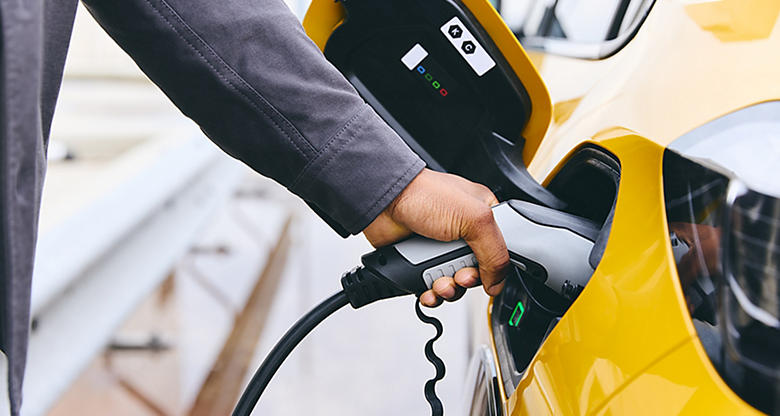Recently, we held the Momentum X EVolution: Charging the Momentum event outlining some of the benefits and challenges we must confront as corporates consider transitioning passenger fleets to EVs.
And while participants at the event appeared bullish about the future, there may still be a long way to go as the nation builds out the infrastructure needed to fast-track our transition to a predominantly electric road fleet.
"We recognise the complexity of transitioning to a passenger EV fleet, which involves a coordinated effort across multiple stakeholders," says CBA managing director of corporate client coverage Michael Thorpe.
"CBA's ambition is to lead the transition and support the different component parts required to develop an ecosystem that makes transition feasible and practical."
A key challenge in the electrification of the nation's passenger vehicles is creating the charging infrastructure and assessing the considerations of charging at home versus public charging stations or those provided by business.
The NSW government estimates 80-90 per cent of EV owners will charge their vehicle at home – whether that is at a single dwelling or in an apartment building. In NSW, 15 per cent of the population live in apartments and there are nearly 84,000 strata schemes.2
Bearing this in mind, Lendlease head of apartments, Daniel Dugina says having charging infrastructure at home is obviously more convenient for consumers but there are several factors at play, such as the suitability of adapting homes to include EV infrastructure and the challenges it can come with, like needing agreement from owner's corporations or limitations of existing infrastructure.
More pointedly, he says the more people who have the capacity to charge their EV at home, the higher the take-up of EVs will become.
According to Dugina, developers are now required under changes to the National Construction Code implemented in 2022 to ensure 100 per cent of the car spaces in a residential development have the ability to connect to EV chargers.
"This doesn't mean you need to put in the chargers, it means you're putting in the backbone infrastructure such as substations, electrical provisions and load management systems so the development can incorporate EV charging in the future," Dugina says.
"It's slightly different in the office and retail space, especially with existing assets, where owners are opting to put in EV chargers as an additional attraction for retail customers and office workers to strengthen the viability of their assets.
"Going forward, the National Construction Code requires that new retail and office developments have a minimum of 10 per cent of car spaces provisioned with the capability for EV chargers to be installed."
Fellow panel participant, group head of innovation and product strategy at SG Fleet Michelle Thomas agrees that while having home charging is convenient, it's crucial to expand public charging infrastructure in workplaces and public areas.
She highlights that workplace charging infrastructure is currently a good option due to the inconsistency experienced by drivers with public chargers.
"This makes it difficult to plan because while you may know how many available chargers are out there, you don't know how many are broken at any one point in time," Thomas says.
"You don't know how long the wait will be when you get there either."
Head of e-mobility business solutions at Ampol, Angeles Miranda, agrees it's very important to understand the pain points consumers face around charging and range anxiety.
She says it's not all about fast chargers powering up cars in record time and that businesses and government should take into account the dwell time of a consumer in a given place. Installing more expensive fast charging has a place on a highway where people are on a journey but if they're off seeing a movie, they'll have more time up their sleeves.
"It's all about improving the customer experience," Miranda says.
Furthermore, Miranda said developing the infrastructure also includes building out the right software capabilities to support charging operators create a range of solutions.
Thomas points out there will be a range of taxation and expenses issues as drivers of fleet vehicles try to better understand how charging works and how the costs can be attributed back to the employer or fleet owner.
Ampol plans to roll out over 300 AmpCharge EV charging bays at more than 100 sites in Australia over 2023/2024, with the goal of operating or controlling at least 500 AmpCharge or equivalent EV charging bays by 2027.3
"We've done the research and we know what consumers want," Miranda says.
"Customers are craving a solution that allows them to seamlessly charge when and where they need it – at home, on the road or at their destination – and manage all their energy needs in one place and the likes of a fleet card is not just convenient for drivers, but also covers the payment, reimbursement and expense management aspects."
"We're now exploring what new technologies we can apply to ensure a seamless experience for customers wherever they're charging."
ACT Co-ordinator General for Climate Action, Sam Engele spoke about Canberra's transition plans to an all-electric fleet and the challenges the nation's capital has faced.
He said the government has about 600 passenger vehicles it hoped to transition to all-electric and they're about halfway through at this point.
On the charging front he said that they have concentrated on workplace rather than home charging.
"There's still some challenges with that in terms of reimbursing employees and tax issues but we're trying to get a better understanding of what works best with the electrical infrastructure we have and what's needed in the future," Engele says.
SG Fleet's Thomas agreed it was still early days when it comes to working through the challenges of building out the necessary EV infrastructure as well as understanding how we apportion the costs, and even how employers examine the occupational, health and safety issues associated with EVs.
But she says there's a "huge interest" in the space and a lot of people are focused on it.
Overall, while many organisations are exploring the transition to EVs through pilot programs, the graduation to using them on a larger scale presents challenges, including lack of charging infrastructure, affordability and vehicle availability. However, as Australia works to uplift and overcome these barriers to large scale EV adoption, it should contribute towards the transition to a net zero future.
This article was originally published in The Australian Financial Review (Nine Publishing) on 30th November 2023.

